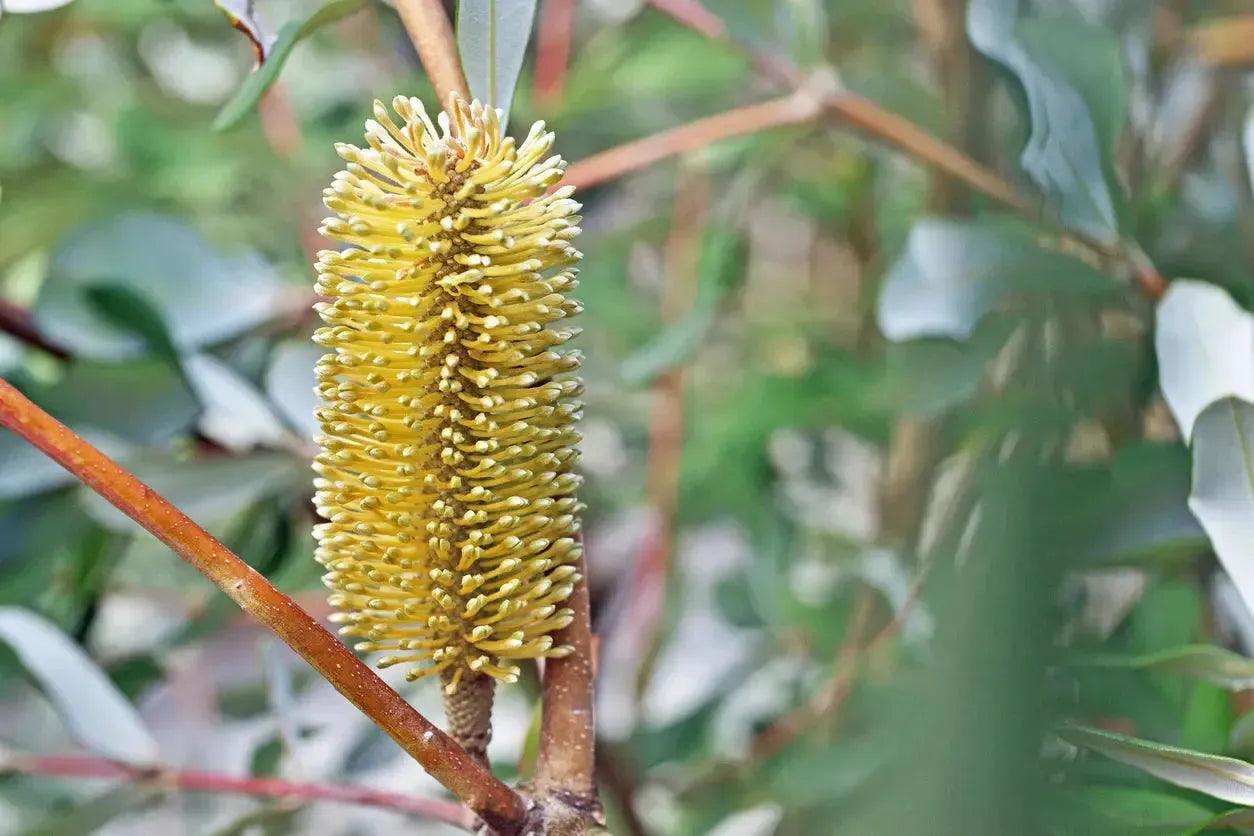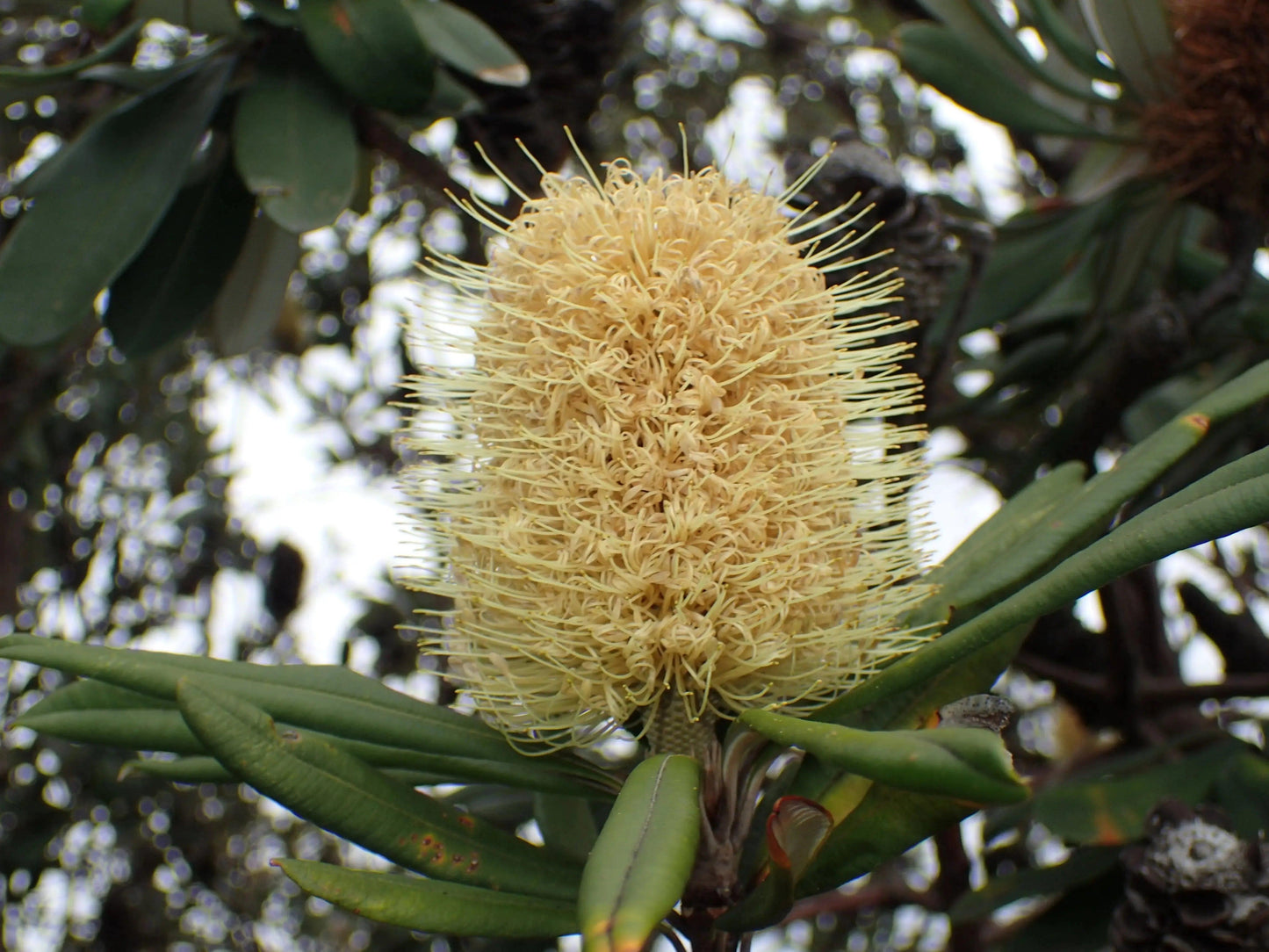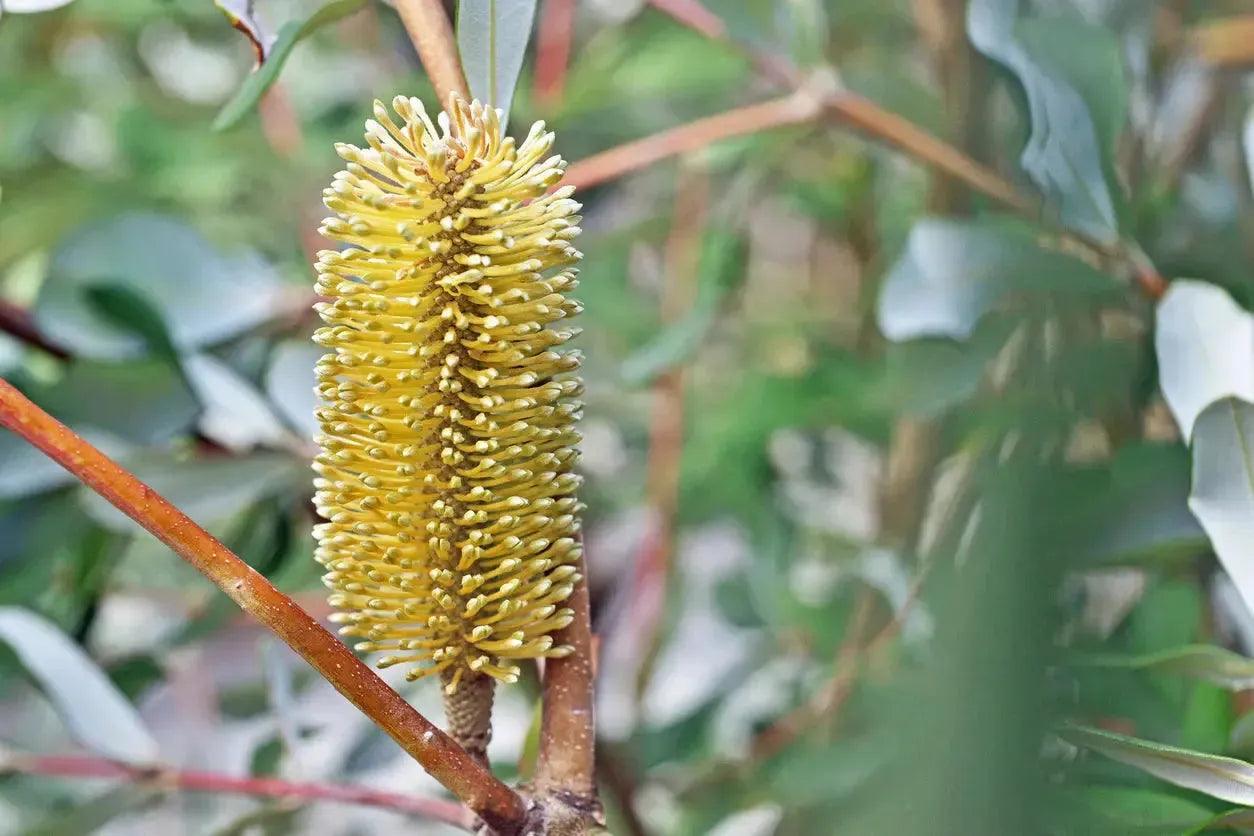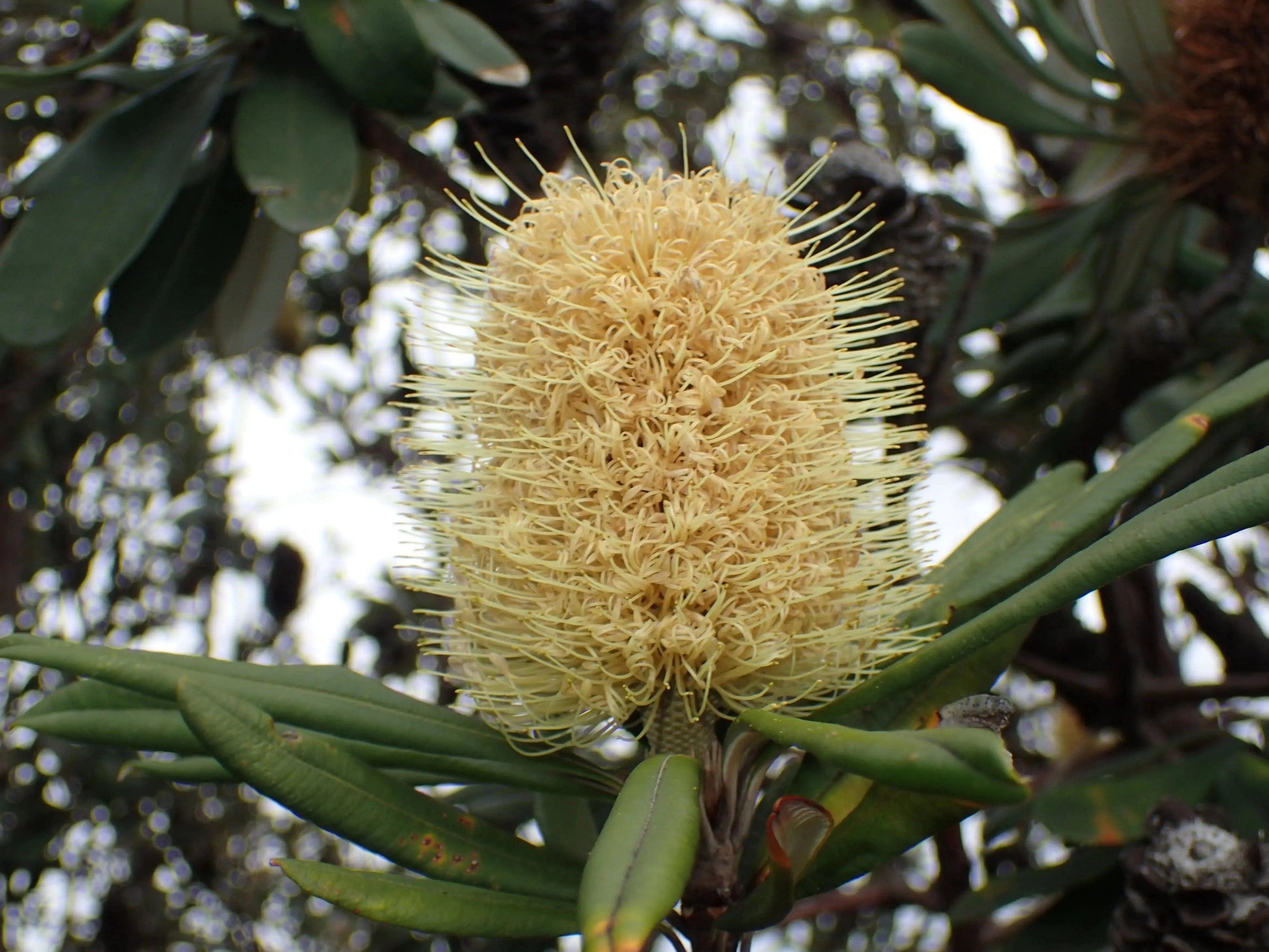Bonte Farm
Banksia Integrifolia: Yellow Flowering Coastal Icon Plant
Banksia Integrifolia: Yellow Flowering Coastal Icon Plant
Couldn't load pickup availability
Banksia Integrifolia: A Majestic Australian Native
Banksia integrifolia, commonly known as the Coast Banksia, is a versatile and iconic Australian native tree. Its distinctive cylindrical flower spikes, attractive foliage, and ecological importance make it a valuable addition to a variety of landscapes. This adaptable species thrives in coastal conditions but also performs well inland, offering year-round interest and attracting a wealth of native wildlife.
Distinctive Blooms and Robust Foliage
- Unique Flower Spikes: Showcases upright, cylindrical flower spikes that emerge a pale green or yellow and mature to a golden yellow or creamy white. These spikes are composed of numerous individual flowers, creating a textured, "bottlebrush" appearance. The main flowering period is in autumn and winter, providing a valuable nectar source when other plants are not in bloom.
- Evergreen Foliage: Maintains attractive, leathery, dark green leaves with serrated edges year-round, adding constant visual interest to the landscape. The underside of the leaves is often a lighter green or silvery-grey.
Botanical Characteristics:
- Scientific Name: Banksia integrifolia
- Common Name: Coast Banksia
- Growth Habit: Variable, ranging from a small tree to a large tree, sometimes multi-trunked.
- Foliage: Leathery, dark green leaves with serrated margins.
- Mature Size: Typically reaches 25-80 feet tall and 15-40 feet wide, depending on conditions and subspecies. In exposed coastal sites, it may remain smaller and more shrub-like.
- USDA Hardiness Zones: 9-11 (tolerates light frost once established).
Cultivation and Care:
- Sunlight: Thrives in full sun (at least 6 hours per day) for optimal flowering and growth. Tolerates some light shade but may produce fewer flowers.
- Soil: Prefers well-draining soil but is adaptable to a wide range of soil types, including sandy, loamy, and even poor, nutrient-deficient soils. It is particularly well-suited to sandy coastal soils. Good drainage is essential to prevent root rot, especially in heavier clay soils. Avoid soils with high phosphorus levels.
- Water: Drought-tolerant once established. Water deeply during establishment and during extended dry periods, but avoid overwatering. Allow the soil to dry out between waterings. Mature trees rarely require supplemental watering except during extreme drought.
- Fertilizer: Generally does not require fertilization, and in fact, high phosphorus fertilizers can be detrimental. If necessary, use a low-phosphorus native plant fertilizer sparingly.
- Temperature: Prefers mild to warm temperatures and tolerates heat and coastal conditions, including salt spray and wind. Can withstand light frost once established but may be damaged by severe or prolonged frost, especially when young.
Landscape Use:
- Specimen Tree: Use as a stunning focal point in gardens, parks, and large landscapes, attracting attention with its unique flower spikes and attractive foliage.
- Screen/Windbreak: Can be used as a windbreak or informal screen, especially in coastal areas.
- Coastal Gardens: Highly suitable for coastal gardens due to its tolerance of salt spray and wind.
- Habitat Gardens: A valuable addition to habitat gardens, providing food and shelter for native wildlife.
Wildlife Attraction:
- Nectar-feeding Birds: The abundant nectar in the flower spikes attracts a wide variety of nectar-feeding birds, such as honeyeaters and lorikeets.
- Insects: The flowers also attract numerous insects, which provide a food source for birds and other animals.
- Habitat: Provides shelter and nesting sites for various birds and small mammals.
Pest and Disease Resistance:
Generally resistant to pests and diseases. Root rot can occur in poorly draining soil. Monitor for signs of fungal diseases in humid conditions and ensure good air circulation. Some minor insect pests may occasionally be present but rarely cause significant damage. Maintaining appropriate growing conditions is the best defense against pests and diseases.
Propagation:
Can be propagated by seed. Seed requires no pre-treatment. Germination is usually reliable. Cuttings are difficult to root.
Incorporating Banksia into Your Landscape:
When designing your landscape, consider the following tips:
- Companion Plants: Pair with other Australian native plants that thrive in similar conditions, such as acacias, grevilleas, and callistemons.
- Spacing: Allow ample space for its mature size when planting to avoid overcrowding.
- Pruning: Generally requires minimal pruning. Remove any dead or damaged branches.
- Soil Amendment: Avoid amending the soil with high-phosphorus fertilizers or excessive organic matter, especially in well-draining sandy soils.
Relevant Plant: Coast Banksia, Australian native plants, drought-tolerant plants, low-maintenance plants, evergreen trees, flowering trees, coastal plants, windbreak, screen, habitat gardens, wildlife attraction, nectar-feeding birds, USDA zone 9, USDA zone 10, USDA zone 11, yellow flowers, creamy white flowers.
Share




